Never Touch This in an Airplane Bathroom, Flight Attendants Warn
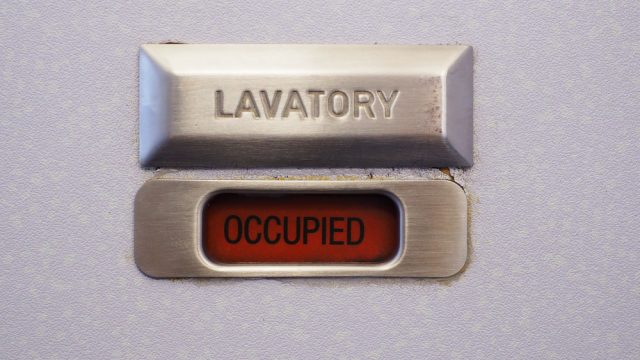
Even before COVID-19 made us hyper-aware of sanitizing, airplanes were never considered the cleanest of places. Not surprisingly, using the lavatories remains a troubling prospect even for travelers who aren’t germaphobes, thanks to the high traffic, tight quarters, disturbing smells, and mysterious puddles. But if you’re looking to avoid making a major microbial mistake, flight attendants warn that there’s one item in an airplane bathroom that you should never touch. Read on to see what you need to watch out for when you go to wash up on your next trip.
RELATED: Never Forget to Do This After Takeoff, Flight Attendant Warns.
Flight attendants warn you should never touch the toilet flush button with your bare hand.
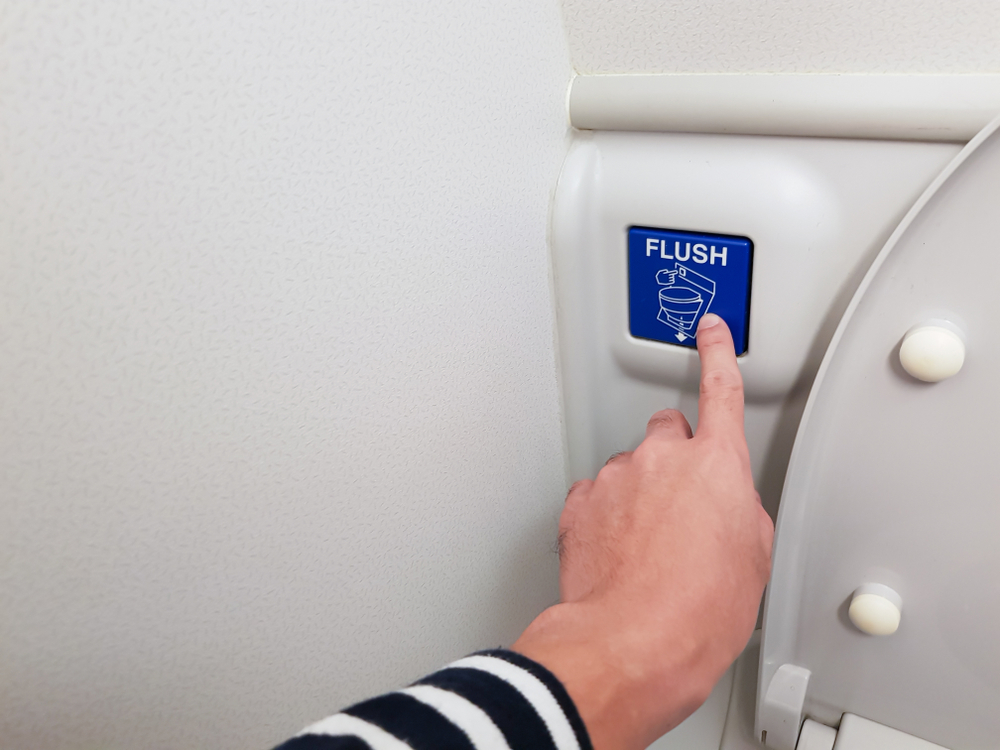
Let’s be honest: No one relishes spending time in the bathroom during a flight. For most, the entire experience is an unpleasant necessity of travel that involves getting in and getting out as quickly as possible. But if you’re really looking to avoid your exposure to nasty germs, flight attendants warn that there’s one specific surface in an airplane bathroom you should always avoid: the toilet’s flush button.
“Do not ever touch the flush button or lever with your bare hands,” flight attendant Tommy Cimato said in a TikTok video from July 2021 that’s been viewed 4.8 million times. “It’s honestly just super unsanitary. It’s pretty gross. So when you flush, use a napkin or a tissue that’s in the lavatory.”
Studies have found the flush buttons carry a considerable load of bacteria.
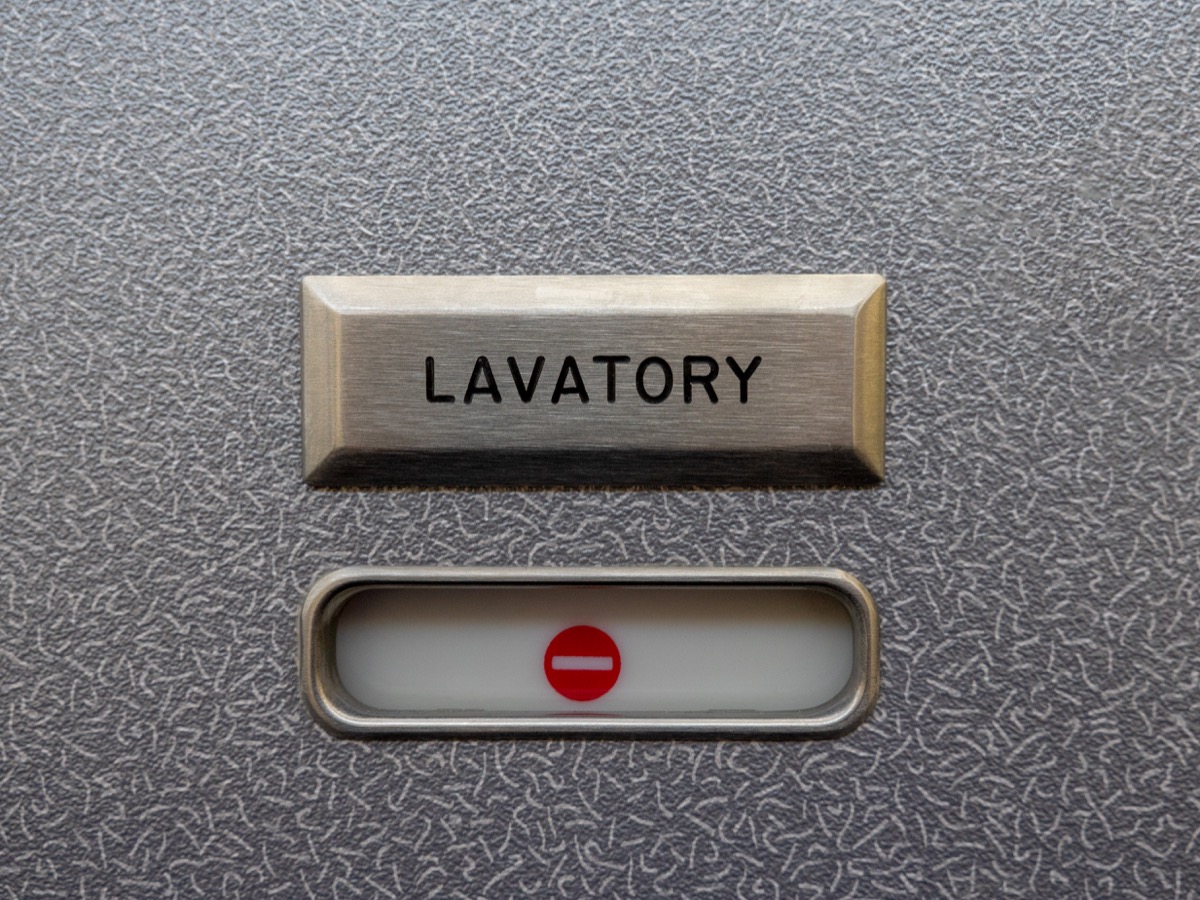
Unfortunately, research has shown there is some truth behind these hygiene horror stories. In one 2015 study conducted by travel planning website Travelmath, samples were taken from surfaces on four flights operated by two major carriers and five airports across the U.S. The results found that lavatory flush buttons had 265 colony-forming units (CFUs) per square inch.
Even though cleaning crews can do their best to sanitize between flights, the main problem is the aggressive vacuum flush used in airplane toilets that can blow microscopic particles into the air. “The combination of that and the confined space of an airplane restroom makes for a much greater chance of these droplets either infecting a nearby surface, which then a person could contact and infect themselves or ingesting them directly and becoming infected,” Tony Abate, Vice President of operations at Atmos Air, told Reader’s Digest. He suggests that when you do go to flush, you can avoid some of this immediate spray back by lowering the lid first.
RELATED: For more up-to-date information, sign up for our daily newsletter.
Shockingly, the study found the area around seats to be dirtier than bathrooms.
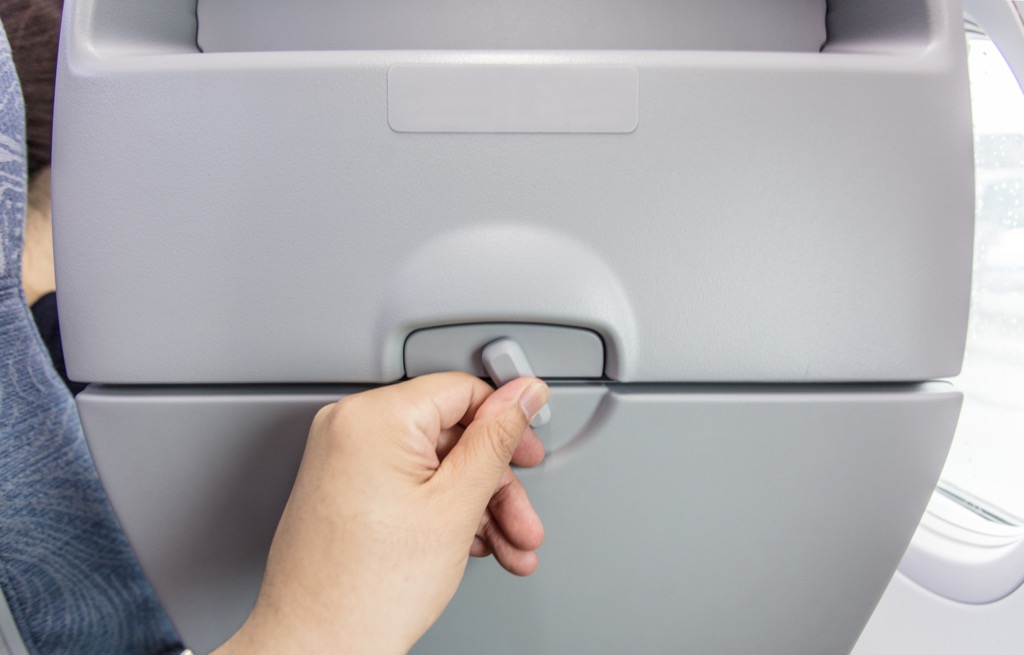
Unfortunately, even avoiding going to the bathroom altogether won’t spare you exposure to germs and bacteria. Results from the test also found that the area around your seat itself is actually the filthiest part of the aircraft, with seatback tray tables carrying an average of 2,155 colony-forming units (CFUs) per square inch, or eight times the amount found on a toilet flush button. The overhead vents and seatbelt buckles were found to have 285 CFU and 230 CFU per square inch, respectively.
“Bathrooms were some of the cleaner surfaces tested, which may be contrary to conventional thought,” TravelMath wrote in a blog post discussing the study. “Regular cleaning schedules mean these surfaces are sanitized more frequently. This is a good thing; while not discrediting the importance of cleaning all major surfaces between flights, bathrooms have the most potential for fecal coliforms to spread.”
Remembering to wash and sanitize your hands is the best way to avoid germs.
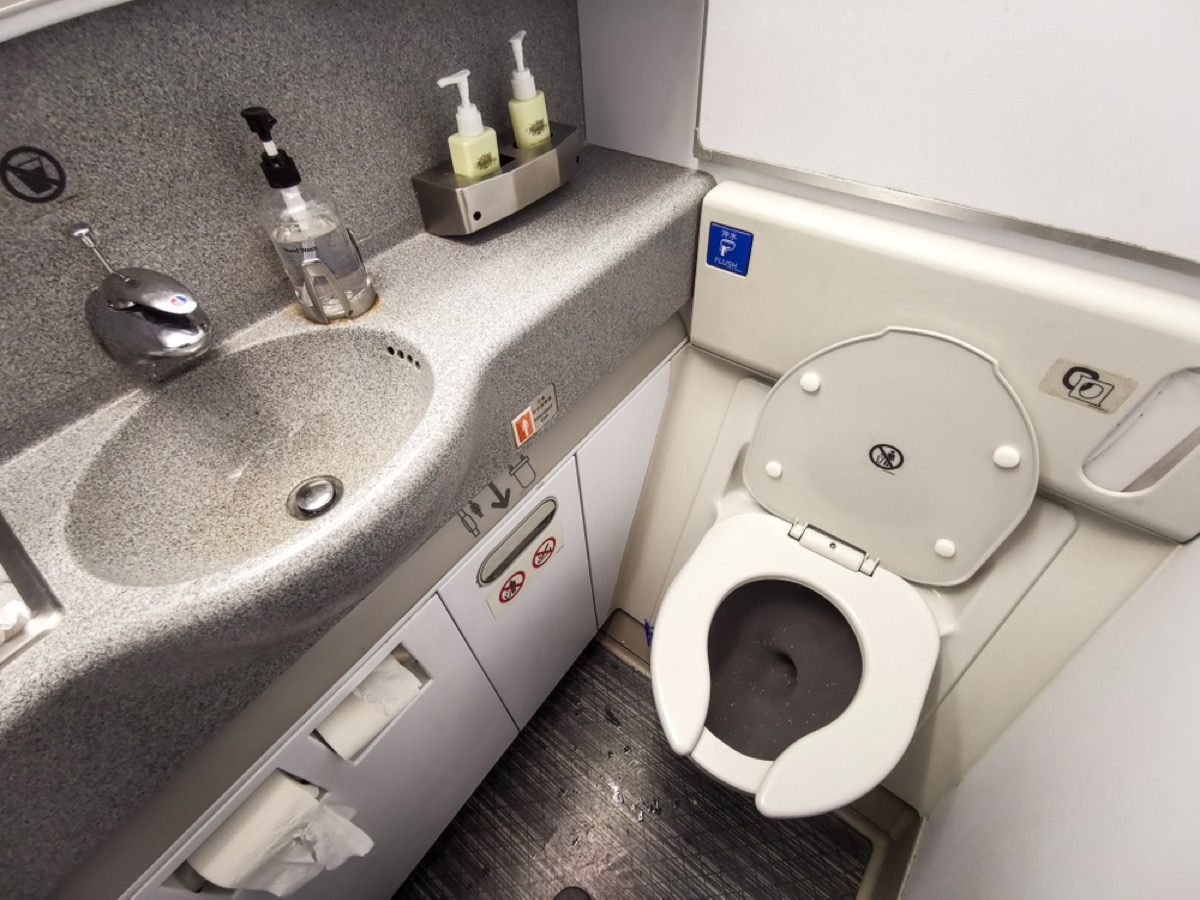
Of course, the reality is that any public space will always have the potential for exposure to germs and bacteria, especially when a toilet is involved. Fortunately, you can literally take matters into your own hands by being sure to wash them after using the bathroom on a plane. And you can add an extra layer of caution by using hand sanitizer when you return to your seat, Abate says.
And as for your filthy seat area? You might want to sanitize those, too.
“My airline hands out little alcohol wipes during boarding for a reason,” Arina Bloom, a flight who worked in the industry for two years, wrote for Business Insider. “Just give the tray a quick wipe when you sit down.”
RELATED: If You Hear These 7 Words on a Flight, an Engine Has Failed, Pilot Says.